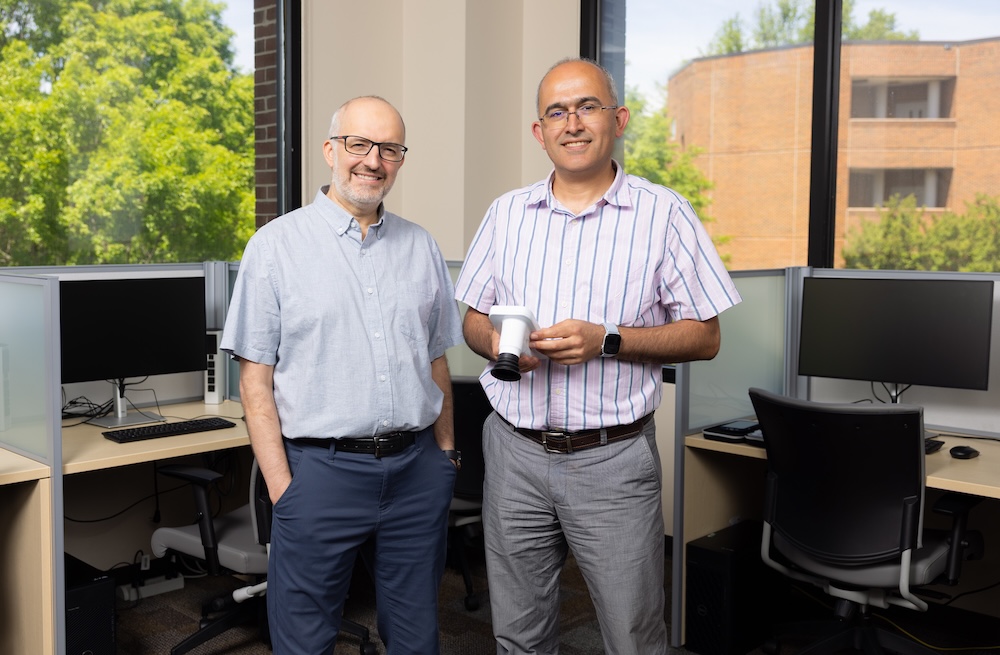Kennesaw State Researchers Earn NIH Grant to Address Diabetic Eye Care via Technology
KENNESAW, Ga. | May 12, 2025
Researchers Mahmut Karakaya and Ramazan Aygun from Kennesaw State University have received a National Institutes of Health (NIH) grant to support their technology-driven approach to addressing diabetic eye disease. The project focuses on diabetic retinopathy, a complication of diabetes that damages the tiny blood vessels in the retina. If left undetected, diabetic retinopathy can lead to vision loss without early symptoms. According to the Centers for Disease Control and Prevention, more than 9 million people in the U.S. suffer from this serious eye condition.

Supported by the NIH grant, Karakaya and Aygun are developing a smartphone-based retinal imaging system to detect diabetic retinopathy earlier and more affordably using artificial intelligence. Karakaya began exploring this technology a decade ago, initially experimenting with smartphones to scan invisible barcodes. This led him to consider using smartphones for capturing medical images.
The research later focused on retinal imaging, recognizing that existing smartphone tools could capture images but not analyze them. By combining smartphone hardware with machine learning, the duo aims to create a diagnostic tool that is both accessible and accurate. Egypt was chosen as the testing location due to its high diabetes prevalence of over 20 percent. Through a local collaborator, Karakaya and Aygun formed partnerships with Egyptian medical professionals to support the project.
Their system uses a smartphone, a lens attachment, and AI to screen for diabetic retinopathy, significantly reducing costs compared to traditional equipment that can cost up to $50,000. The process involves capturing a patient’s retinal image, assessing its quality, and analyzing it using AI. If abnormalities are detected, the system recommends a follow-up with a specialist.
“This approach is game-changing for primary care,” said Aygun, an associate professor of computer science. “With this tool, we can reach people where they are without expensive equipment or needing a specialist on site.”
The team is also developing WisdomNet, an AI framework designed to recognize its own uncertainty and defer complex cases to human doctors. “The goal isn’t just to build an accurate model, but a trustworthy one,” Aygun added. To enhance the AI’s robustness, they are incorporating expert knowledge and planning to use gaze-tracking to teach the algorithm how doctors evaluate retinal images. Their aim is to achieve at least 80% diagnostic accuracy by the project’s end.
Students at various levels, from undergraduates to Ph.D. candidates, are contributing to the research, gaining valuable hands-on experience that will shape their future careers. “They’re not just learning how to code or train models; they’re learning how to build ethical, reliable tools that impact lives,” Karakaya noted.
Long-term, the researchers hope their system will be scalable for use in mobile clinics, pop-up screenings, and even remote monitoring by community health workers. With proper support and deployment, the technology could address broader healthcare gaps beyond diabetic retinopathy, potentially adapting to detect other vision-threatening diseases like glaucoma and macular degeneration.
“Accessibility is at the core of what we’re doing,” Karakaya emphasized. “This is about removing barriers related to cost, distance, and technology, and giving people the power to act early.”


